Spray painting a Glock pistol, or any firearm for that matter, might initially appear as a formidable endeavor. There are questions around legality, durability, and the correct method of application to consider. However, with the right approach and by following specific guidelines, it is indeed possible to customize your Glock using spray paint. This article will delve into the details, exploring the considerations, steps, and precautions involved in painting a Glock. Let’s delve into the possibility of spray painting a Glock, whether it be for aesthetics or to enhance its camouflage capabilities.
What Is The Best Method For Spray Painting A Glock?
The optimal method for spray painting a Glock involves a systematic process for best results.
Disassemble Your Glock
Before commencing the painting procedure, it is crucial to dismantle your Glock firearm. Start by ensuring the firearm is unloaded and safe to handle. Proceed by removing the magazine and slide. Separate the barrel and spring from the slide.
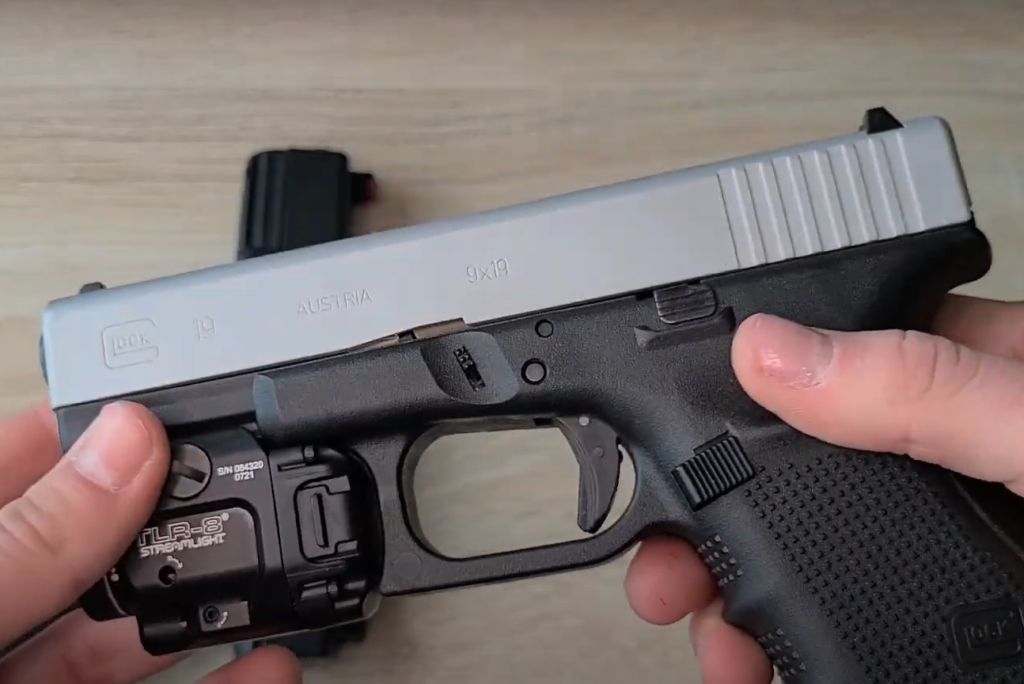
After the process, you will be left with the essential elements: the frame, slide, barrel, and guide rod spring. Remember, smaller parts such as the sights, firing pin, and extractor should also be removed if possible, as these components should not be painted. With the Glock disassembly, you can proceed to the next step in the process.
Clean And Degrease
The next crucial step is to thoroughly clean and degrease the parts that you intend to paint. The presence of oil, grease, or dirt on your Glock can hinder proper adhesion of the paint. For cleaning firearms, you have the option of using a degreaser specifically formulated for them or a versatile general-purpose degreaser such as Simple Green. To apply the degreaser, use a clean and lint-free cloth, gently scrubbing all surfaces. Pay particular attention to nooks and corners where dirt and oil might be trapped. After degreasing, cleanse the components using warm soapy water, followed by a thorough rinse. Allow them to air dry completely. It’s important to handle the cleaned parts with gloves to prevent oils from your skin from contaminating the surfaces. [1]
Prime The Surface
Priming the surface of your Glock is an essential step to ensure the durability and finish of the paint job. A good primer will create a barrier between the metal of your Glock and the paint, helping the paint adhere better and preventing rust. Consider using a self-etching primer designed for use on metal surfaces. Spray a light coat of the primer onto all parts you intend to paint, keeping the spray can at a distance of about 12 inches to avoid drips and runs. Allow the primer to dry according to the instructions on the can, which is typically a few hours. After drying, gently sand the primer with fine sandpaper (around 600 grit) to achieve a smooth surface for painting. Remove dust by gently wiping it away with a soft, lint-free cloth.
Tape And Mask
To proceed, it is important to cover or mask off any areas that you do not wish to paint. This typically includes the inside of the slide, the barrel, the guide rod spring, and any other internal components. Use painter’s tape to cover these areas carefully, ensuring that all parts that should remain unpainted are well protected.
For areas that are hard to cover with tape, consider using aluminum foil or plastic wrap, which can be molded to fit. [2]Apply The Paint
Applying the paint is the step where your Glock begins to transform. When choosing a paint, opt for a high-quality spray paint designed for use on metal surfaces and is resistant to heat and environmental conditions. Popular choices among gun enthusiasts include Cerakote and Duracoat. Start by shaking the paint thoroughly for a minute or two to ensure proper mixture.
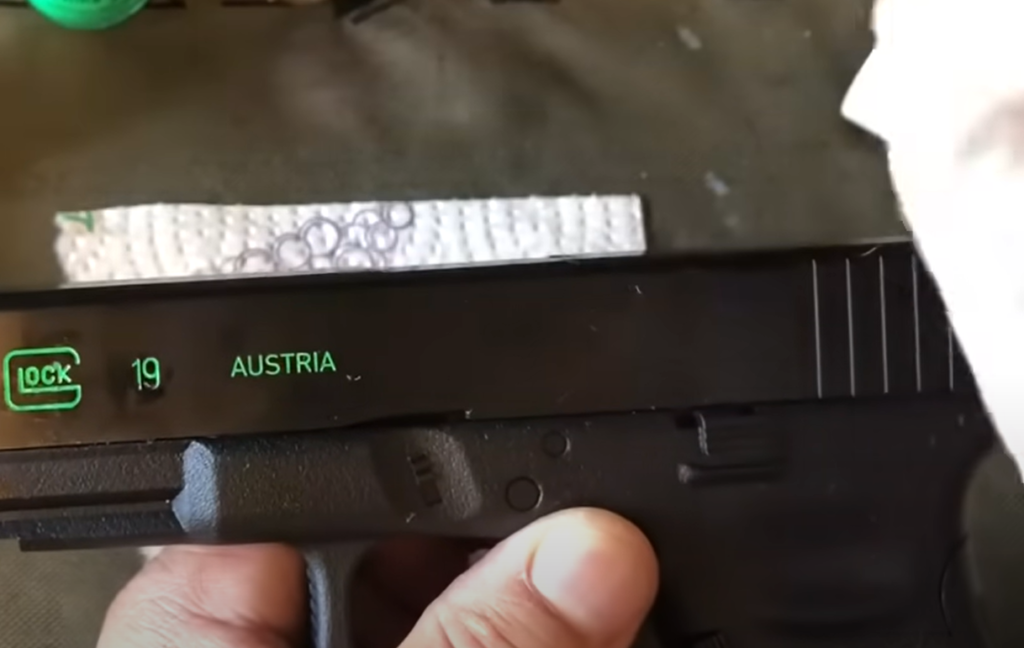
Then, hold the spray approximately 12 inches away from the surface and apply the paint using steady, even strokes. To prevent runs or drips, it is crucial to apply multiple thin coats instead of a single heavy coat. Allow each coat to dry for about 10-15 minutes before applying the next. The drying time between coats will vary depending on the brand of paint, so always refer to the manufacturer’s instructions. After you’ve applied the final coat, let your Glock parts dry for 24 hours before handling them.
Apply A Sealer
Applying a sealer is the final step in the painting process, providing an extra layer of protection to the firearm. A quality sealer will protect the paint job from scratches, chips, and general wear and tear, helping to prolong the life of your Glock’s new look. Make sure to choose a clear sealer that’s designed for use on metal surfaces and is heat resistant. Just as with the paint, shake the can well before use, hold it about 12 inches away from the surface, and spray in smooth, even strokes. Once again, it’s better to apply several light coats rather than one heavy coat. Allow the sealer to dry according to the manufacturer’s instructions before handling. Now, with the sealer applied and dry, your newly painted Glock is ready for reassembly.
Reassemble The Gun
After all parts are fully dry and you’ve completed the painting process, it’s time to reassemble your Glock. Begin with the slide, reinserting the firing pin, extractor, and other components that were removed. Next, reattach the barrel and the guide rod springs into the slide. Once these pieces are back in place, you can reassemble the slide onto the frame of the gun.
Finally, insert the magazine. Make sure that everything fits together smoothly and operates as expected. If you encounter any problems, refer to the Glock owner’s manual or consult with a professional. Once you’ve successfully reassembled your Glock, it is now ready for its next use. [3]What Type Of Paint Do You Use On A Pistol?
When it comes to painting a pistol, choosing the right paint is critical to ensure durability, resistance to environmental conditions, and an aesthetically pleasing finish. The most recommended types of paint for firearms are epoxy-based paints and heat-resistant paints.
Epoxy-based paints such as Cerakote and Duracoat are popular options among gun enthusiasts. These paints offer a wide variety of colors and are known for their resistance to scratches, chipping, and fading. They are specifically designed for firearms and provide excellent adhesion and durability, even under harsh conditions.
Heat-resistant paints, like those used for automotive or high-heat applications, are also an excellent choice. They can withstand the high temperatures that can occur in firearms when firing, which helps ensure the longevity of the paint job.
Best Spray Paint For Glock
When it comes to choosing the best spray paint for your Glock, two brands often come to the forefront, Cerakote and Duracoat. Both of these paints are epoxy-based and are designed specifically for firearms, making them an excellent choice for your Glock.
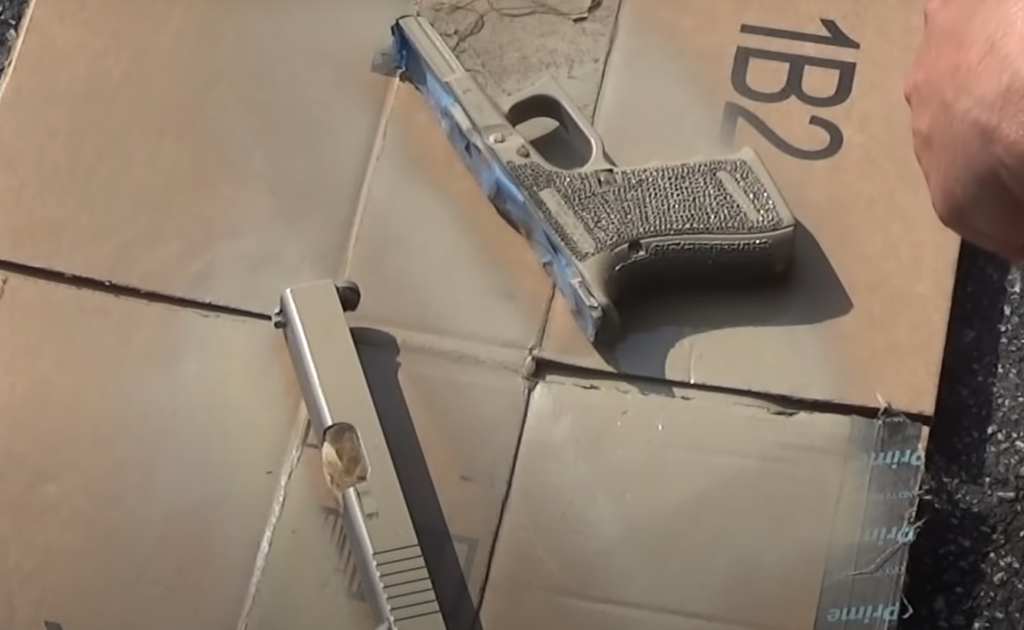
Cerakote is known for its superior durability and resistance to corrosion and abrasion. It comes in a wide range of colors and finishes, allowing you to customize your Glock to your style. The paint is heat resistant up to 500 degrees Fahrenheit, ensuring it can withstand the elevated temperatures a firearm may experience.
Duracoat, on the other hand, stands out for its ease of use and versatility. No baking or preheating is required for the paint to cure, and it can be applied to a variety of surfaces, not just metal. Duracoat is also incredibly resilient, holding up well against impact and scratching. [4]
FAQ
Is it okay to paint a gun?
Yes, it is perfectly okay to paint a gun as long as it’s done properly and in compliance with local, state, and federal laws. Painting a firearm can enhance its aesthetic appeal and provide a layer of protection against rust and corrosion. However, it’s important to remember that the painting process should not interfere with the gun’s functionality. The paint should not be applied too thickly or enter the firearm’s internal components as it could compromise its performance.
Is it safe to paint a handgun?
Yes, it is safe to paint a handgun, provided the painting process is done correctly and with the necessary precautions. The paint should not obstruct any moving parts or penetrate the internal mechanisms of the firearm, as this could impair its functionality. The trigger, barrel, and any other parts that move or carry ammunition should be carefully masked during painting to avoid interference. Additionally, the use of heat-resistant and metal-compatible paint is recommended to ensure the safety and longevity of the firearm.
What kind of paint can you use on guns?
There are several types of paint suitable for use on guns. Epoxy-based paints, such as Cerakote and Duracoat, are two of the most popular choices due to their durability, resistance to wear and tear, and the wide color range they offer. Aluma-Hyde II is another good option, known for its long-lasting finish and resistance to chipping or scratching.
Heat-resistant paints, often used in automotive or high-heat applications, are also suitable choices as they can withstand the high temperatures that firearms may reach during firing.
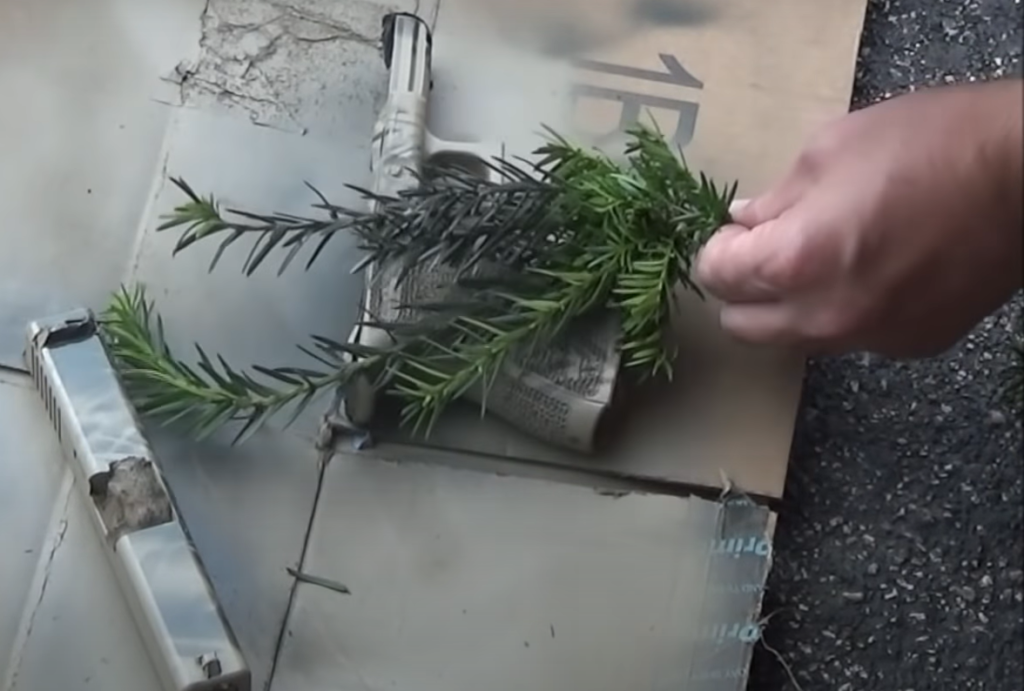
In addition to these, enamel paints are commonly used for their high-gloss finish and excellent durability. They are however slower to dry and require a curing period.
Lastly, KG Gun Kote is a thin, hard coating that provides excellent corrosion resistance and high impact durability.
Can you spray paint an AR 15?
Yes, you can spray paint an AR 15 as a means of personalizing it and adding a layer of protection against environmental factors. Similar to a Glock, the key factor in spray painting an AR 15 is the choice of paint. Epoxy-based paints like Cerakote and Duracoat are excellent choices due to their durability and resistance to wear and tear. Aluma-Hyde II and KG Gun Kote are other viable options. Heat-resistant paints are also suitable due to the potential for high temperatures during firing. Before painting, it is crucial that you thoroughly clean and prepare the surface – a step that goes a long way in ensuring a successful and long-lasting finish.
Is it better to paint with a brush or spray gun?
Both brush painting and using a spray gun have their merits when it comes to painting firearms. Brush painting, while more time-consuming, allows for meticulous attention to detail, making it a good choice for intricate designs or small areas. There’s also a reduced risk of overspray, and cleanup is typically easier.
Spray guns, on the other hand, are excellent for covering large areas quickly and evenly, resulting in a smooth, professional finish. They’re particularly ideal for projects like an AR 15 or Glock, where a uniform coat is desired.
Are soldiers allowed to paint their guns?
Yes, soldiers are allowed to paint their guns, but it typically depends on the regulations of their specific military branch and their operational requirements. Some units may encourage soldiers to paint their firearms for camouflage purposes, especially in combat zones where blending in with the environment can provide a strategic advantage. However, the painting must be done professionally and not interfere with the functionality of the weapon. The paint mustn’t obstruct moving parts or penetrate the internal mechanisms, as this can impair its operation. Soldiers are typically not allowed to paint their service weapons for personal aesthetic reasons and unauthorized modifications may lead to disciplinary actions.
How long can paint stay in a gun?
Paint can stay in a spray gun for a short period, typically around 24 hours, depending on the type of paint and the environmental conditions, but it is not recommended to leave it in for this long.
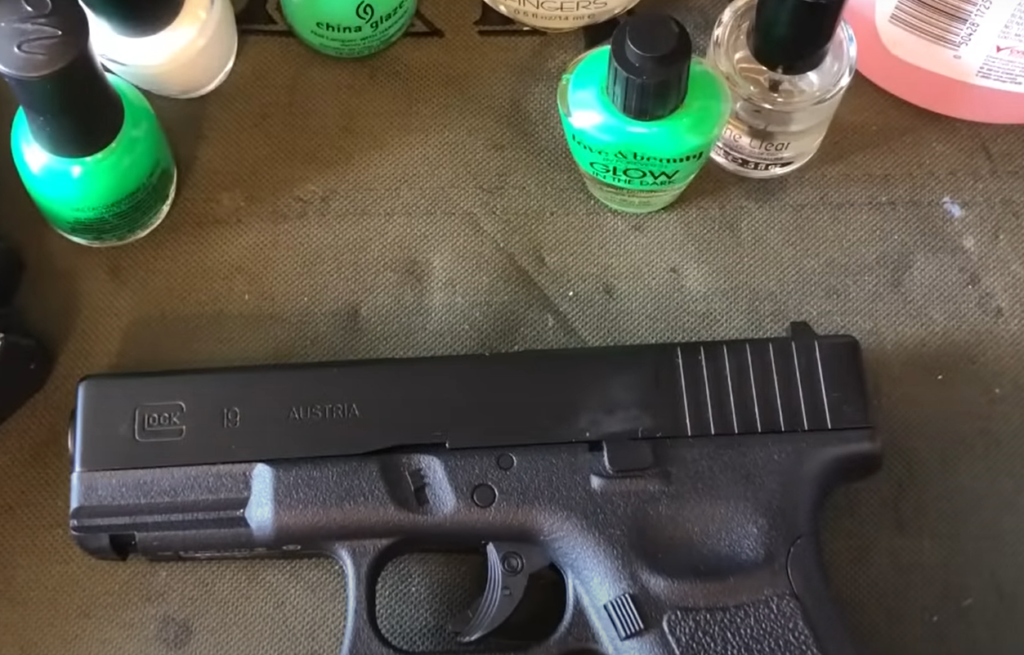
It’s important to clean the spray gun after every use to prevent the paint from drying and clogging the nozzle, which can impair the gun’s performance and make it difficult to achieve a smooth, even finish during its next use. In the case of oil-based or enamel paints, these can harden within a few hours in the gun, potentially causing damage.
How long does spray paint last?
The longevity of spray paint on a firearm greatly depends on a variety of factors such as the type of paint used, the preparation process, and the usage and care of the firearm. Typically, high-quality epoxy-based paints like Cerakote and Duracoat can last for several years with proper application and care. However, it’s essential to note that harsh conditions, rough use, and constant exposure to heat can reduce the lifespan of the paint.
Once opened, it’s best to use within 1 to 2 years. Proper storage and handling can help extend the life of your spray paint.Can handguns rust?
Yes, handguns can rust if they are not appropriately cared for. This usually happens when they are exposed to moisture and not properly cleaned or oiled after use. Rust is a form of corrosion that occurs on iron and its alloys, including steel, the material from which many handguns are made. The risk of rusting increases in humid conditions or if the gun comes into contact with sweat or water. Therefore, regular maintenance, including cleaning and oiling, is important to prevent rust and maintain the firearm’s functionality and appearance.
Will guns rust in a gun safe?
Yes, guns can rust in a gun safe, especially if the safe is located in a high-humidity environment or if the firearms were stored without being properly cleaned and oiled. While a gun safe can provide a level of protection against external conditions, it cannot completely prevent the formation of rust if the conditions within the safe are conducive to corrosion. To minimize the chances of rusting inside a gun safe, you should consider using a dehumidifier or moisture-absorbing products inside the safe.
Useful Video: Cerakote paint on a Glock – When should you Spray paint a gun vs Cerakote it?
Conclusion
In conclusion, painting a Glock or any firearm can be an effective way to personalize and protect your weapon, as well as to provide a tactical advantage in certain situations. Whether you choose to use a brush or a spray gun largely depends on your circumstances and preferences. However, it is important to remember that any painting process should not interfere with the functionality of the gun. Similarly, while service members may be allowed to paint their firearms, they must adhere to the regulations of their specific military branch. Lastly, it’s important to remember that while spray paint can last for several years, environmental factors and usage can impact its lifespan.
References:
- https://paintanalyzer.com/can-you-spray-paint-a-glock/
- https://www.80percentarms.com/blog/how-to-paint-your-pistol-frame-part-1/
- https://mary-catherinerd.com/how-to-paint-a-glock/
- https://yestactical.com/paint-your-glock


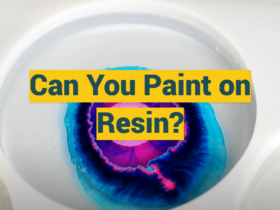

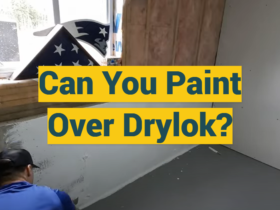
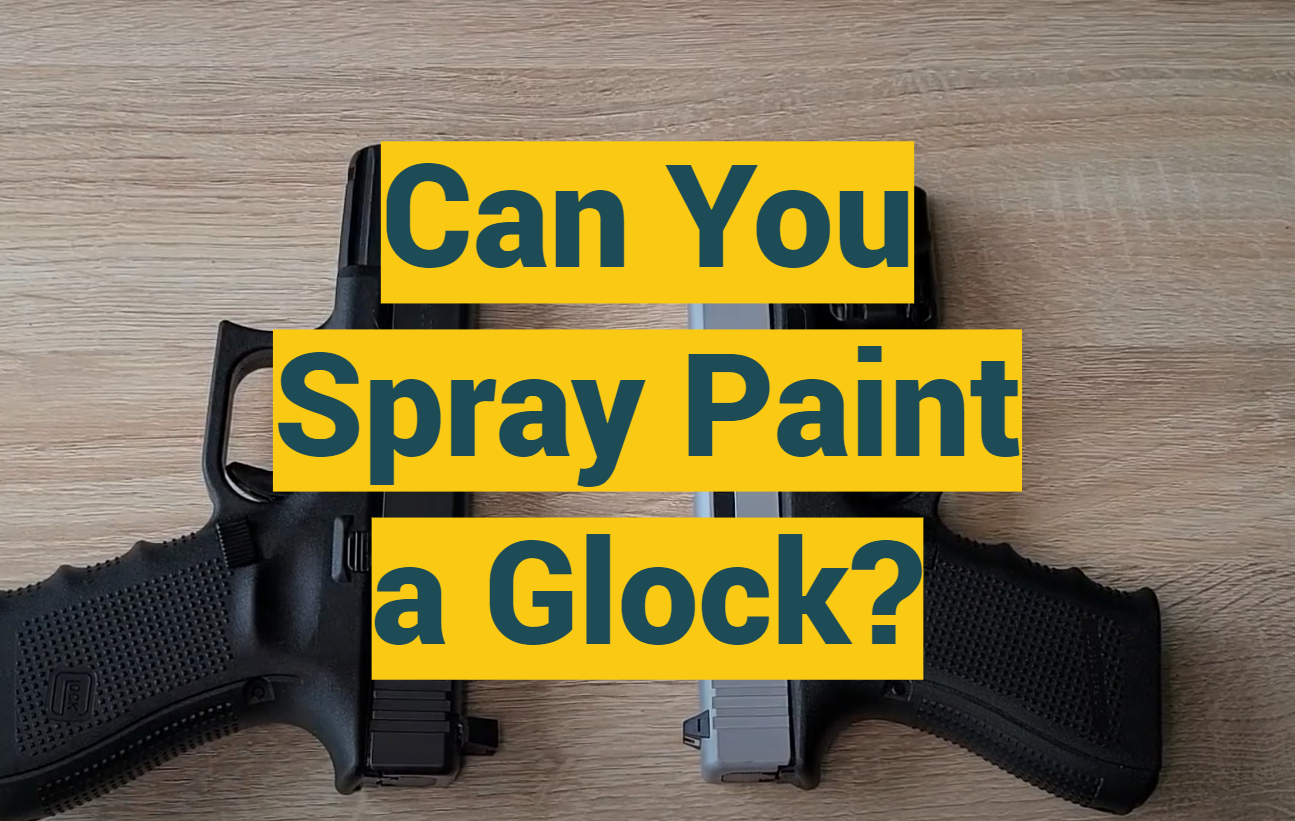




Leave a Review